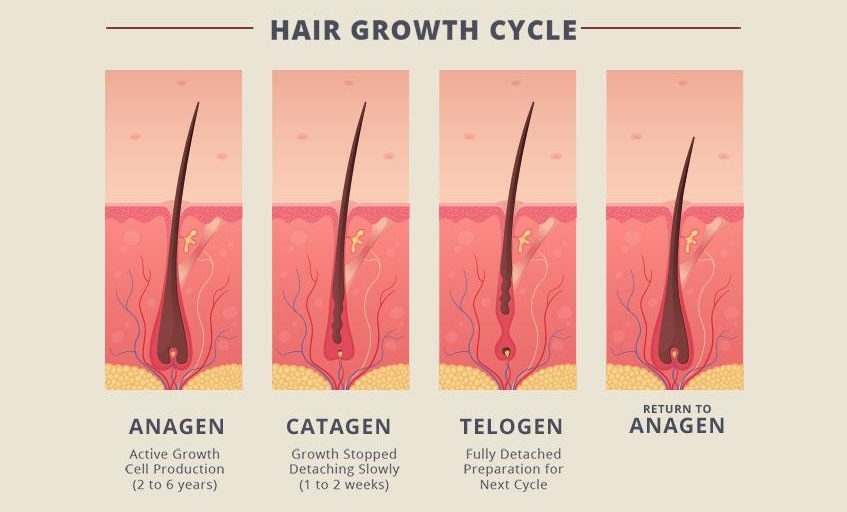
When considering long-lasting professional hair removal treatments, laser hair removal likely comes to mind first. It has captured the hearts of many women and some men due to its precise results, effective procedures, and minimal maintenance requirements.
Despite the low maintenance, it is essential to care for your skin and manage any unwanted hair during your follow-up sessions. Consequently, it's crucial to understand when you can shave after undergoing laser hair removal.
While general guidance on laser hair removal is available in comprehensive guides, this article will focus specifically on the timing of shaving between sessions and address the question: when can I shave after laser hair removal?
Table of Contents:
Part 1: Is It Possible to Shave on the Same Day as Laser Hair Removal?
No, shaving on the same day following a laser hair removal session is not advisable. The skin tends to become sensitive and more susceptible to irritation from pressure or friction after treatment.
Shaving involves the blades making contact with the skin, which can lead to irritation and potential injury. It is safer to allow your skin ample time to heal completely before shaving; generally, waiting about 5 to 7 days post-treatment is recommended.
Part 2: When Is It Safe to Shave After Laser Hair Removal?

The Hair Regrowth Cycle
The hair growth cycle consists of four primary phases: anagen (the active growth phase where hair receives nutrients from its follicles), catagen (the phase where hair growth ceases and the strands detach from the papilla, entering a resting state), telogen (characterized by halted growth and weakened hair roots), and finally, exogen (where hair is released from the roots and falls out).
Laser hair removal is most effective on hair that is in the actively growing anagen phase, as these hairs are directly connected to their follicles and contain the maximum amount of pigment required for optimal laser absorption.
The Shedding and Hair Reduction Period
Typically, around 15 to 20% of hair is in the anagen phase during a particular session. This subset is primarily impacted by the laser and tends to shed within a week following treatment.
Moreover, the laser effectively destroys the hair follicles, significantly reducing future hair growth from these treated strands.
Timing Your Shaving Post-Laser Hair Removal
Since multiple sessions are necessary for effective laser hair removal, some hair will inevitably regrow in patches between treatments. This may necessitate shaving until your next session.
However, it is crucial to refrain from shaving immediately after a laser hair removal session. Instead, it is advisable to wait for approximately 3 to 5 days before resuming your shaving routine, adjusting it based on individual needs and reduced hair regrowth.
Consulting Your Doctor
If you are apprehensive about shaving but wish to manage regrowth, consult your doctor for personalized advice regarding shaving after laser hair removal. Additionally, feel free to ask questions about the laser treatment process and when to shave.
Part 3: How Does Shaving Impact Laser Hair Removal Results?
The answer is both yes and no. Shaving is a vital preparation step prior to undergoing laser hair removal. If you shave beforehand, your results tend to be more favorable. Conversely, neglecting to shave can lead to skin burns, preventing the laser from effectively targeting hair follicles, which may increase side effects and diminish results.
On the other hand, shaving after a laser treatment does not negatively affect the results, provided you allow a few days for your skin to recover first. However, it's advisable to avoid other hair removal methods during your laser treatment course.
Part 4: Essential Shaving Tips and Precautions Before Laser Hair Removal
Here are some general tips and precautions to observe when shaving prior to laser hair removal.
1. Avoid Plucking, Waxing, Epilating, or Bleaching the Area to Be Treated
It's crucial to understand that without hair, the laser treatment will lack effectiveness. Additionally, the laser can burn the skin if hair is too long.
Your best approach is to shave approximately 12 to 24 hours before your session while steering clear of any other hair removal methods in the treatment area. For more information, you can also explore why waxing is not advisable post-laser treatment.
2. Protect Your Skin from Sun Exposure
The sun can be particularly detrimental when planning for laser hair removal. Its UV rays can darken and damage your skin.
This can increase discomfort during the procedure and lead to increased sensitivity post-treatment. Therefore, it is wise to minimize sun exposure by staying indoors and applying sunscreen.
3. Ensure Your Skin Is Clean Before Shaving
Your skin should be free of product buildup, pollutants, impurities, and oils before shaving, as these can heighten infection risks. Thus, a thorough cleansing of the treatment area using a gentle body or face wash is essential.
4. Regular Exfoliation
Dead skin cellshair follicles
Exfoliating once a week can significantly enhance both your shaving experience and the effectiveness of hair removal treatments.
5. Shave with Precision
Properly shaving unwanted hair before your laser session is vital. Always utilize a sharp, new razor, shave on wet and lubricated skin, and follow the direction of hair growth for the best results.
For additional guidance on shaving prior to laser hair removal, be sure to check out more specific tips.
Part 5: Post-Treatment Care Following Laser Hair Removal
To achieve optimal results after laser hair removal, adhere to the following post-treatment guidelines.
1. Avoid Sun Exposure
Similar to the pre-treatment phase, it's critical to protect your skin from sun exposure after your laser session. Utilize UV-resistant clothing






































